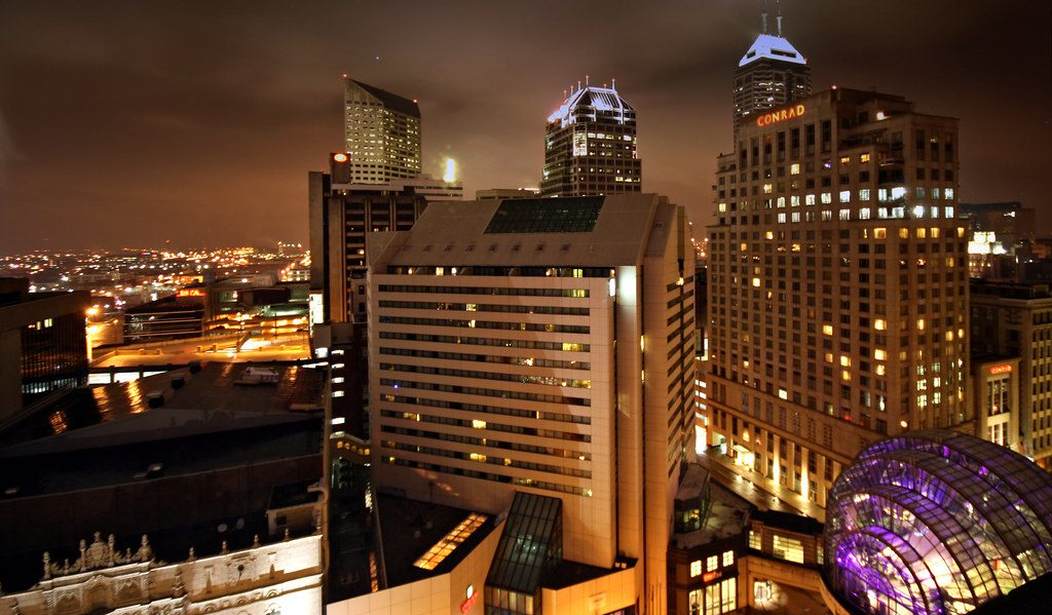In a way, this is a tale of two cities: one whose officials insist that their violent crime rates can’t be reduced without restricting the rights of legal gun owners, and one that’s found a way to bring down its violent crime and homicide rates while state lawmakers have expanded the right to carry.
In Philadelphia, Mayor Jim Kenney and District Attorney Larry Krasner are among those who maintain that the city’s violent crime is the result of a lack of gun control laws, though statistics show the number of prosecutions for existing gun-related offenses is declining. In Indianapolis, on the other hand, homicides and shootings have dropped by double-digits compared to last year, even as the state of Indiana removed its requirement that those carrying concealed firearms be licensed to do so.
According to gun control activists, that alone should have sent Indy’s murder rate soaring. Instead, police say that the numbers are moving in the right direction.
Compared to a year ago, as of October 4, homicides in Indianapolis are down nearly 17% compared to last year’s record setting pace and non-fatal shootings have dropped almost 13%.
On October 4, 2019, IMPD had recorded 122 homicides.
A year later that total stood at 177.
Last year, the most murderous in the city’s history, the homicide total stood at 202.
As of Tuesday, this year’s tally was 169.
”All the crime trends have been going down since April of last year,” said [IMPD Assistant Chief Chris] Bailey.
Gun crimes detectives, violent crimes investigators, specialty district units and covert robbery officers have apprehended nearly three thousand offenders since the spring of 2021, presumably taking many potential suspects and victims off the streets before more violence is committed.”It’s not just about protecting our victims. Sometimes it’s about protecting these criminals from themselves and the sooner that we can get them off the street and stop their activity, then we protect lives,” said Bailey. ”We want outcomes that are positive for our community and I think that’s a big mindset change.”
The IMPD change in strategy coincides with $15 million committed this year and for the next two years by Indianapolis Mayor Joe Hogsett to community anti-violence spending.
OPHS claims its peacemakers have performed 464 mediations thus far this year, contacted 111 people at high risk for gun violence, enrolled 67 of them in 18-month-long life coaching programs that have led to nearly half gaining fulltime employment.
I’m not opposed at all to violence intervention programs as long as they have a proven track record of success and there’s plenty of oversight over third parties who are getting grant money. I can’t speak to closely Indianapolis is keeping an eye on their violence prevention groups, but that’s another area where the city of Philadelphia is failing miserably.
“Our leadership in the city needs to be accountable for where the dollars go. If we give out money we should know what we are getting for that money,” said Temple University Criminal Justice Prof. Caterina Roman.Jamal Johnson, a retired U.S. Marine who protests gun violence across the city, said he believes the millions the city is doling out to antiviolence groups at the grassroots level is failing.“It’s the new hustle,” said Johnson, 65, who annually walks to Washington, D.C. to highlight the city’s crisis. “Everybody can get a grant, everybody gets paid, and nobody does anything on the street. The only way you’re going to find out what’s working is with the data, and whenever you ask Erica Atwood for the data on who they’re funding, she says, ‘I’ll get back to you.’ She’s been saying that forever.”Atwood, senior director of the Office of Policy and Strategic Initiatives for Criminal Justice & Public Safety since the fall of 2020, confirmed that the evaluation of key crime-fighting programs is still ongoing. Those evaluations, first promised by the Kenney Administration in 2017, include Group Violence Intervention, the Community Crisis Intervention Program, and two programs that give money to individuals and grassroots groups — Targeted Community Investment Grants and Community Expansion Grants.








